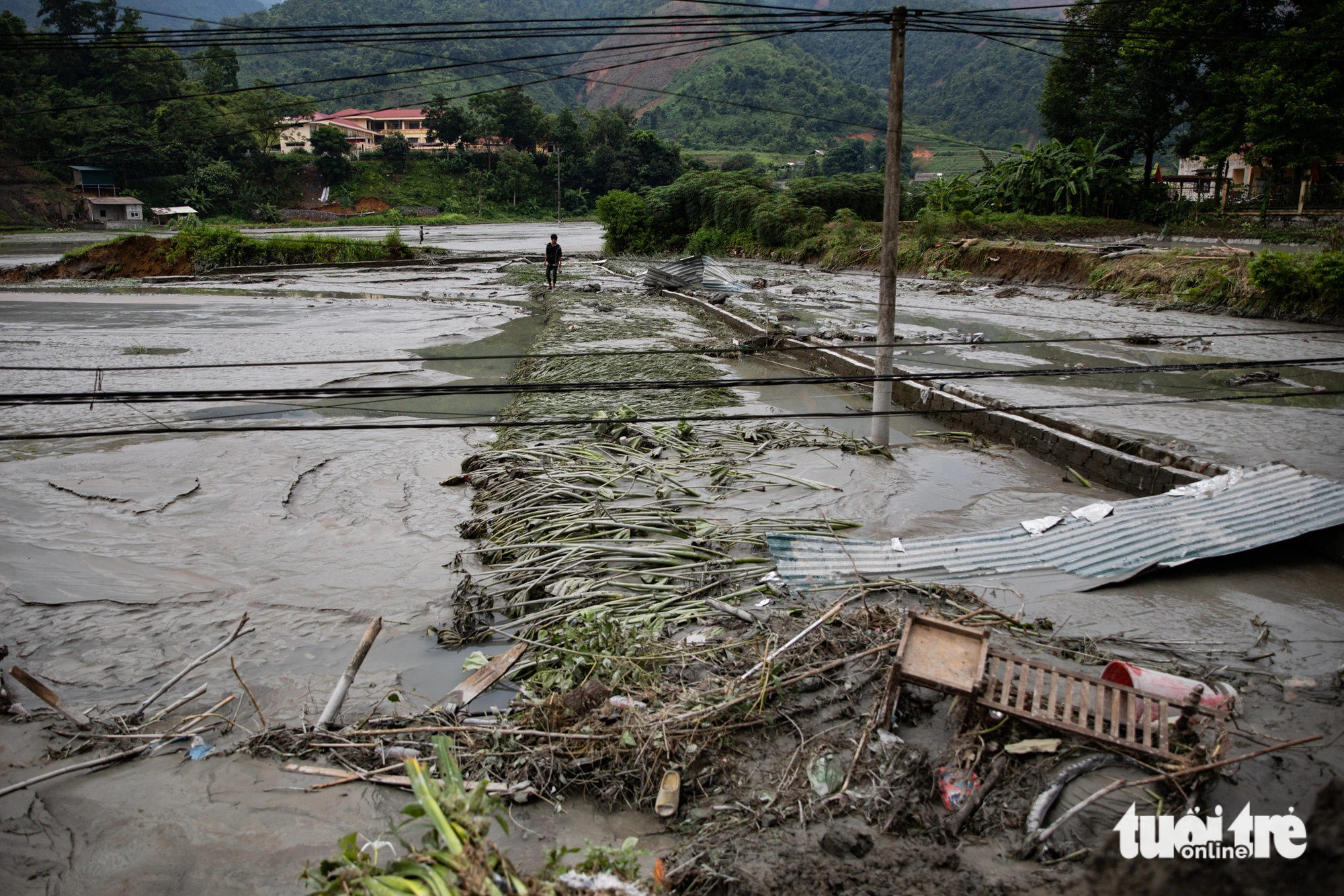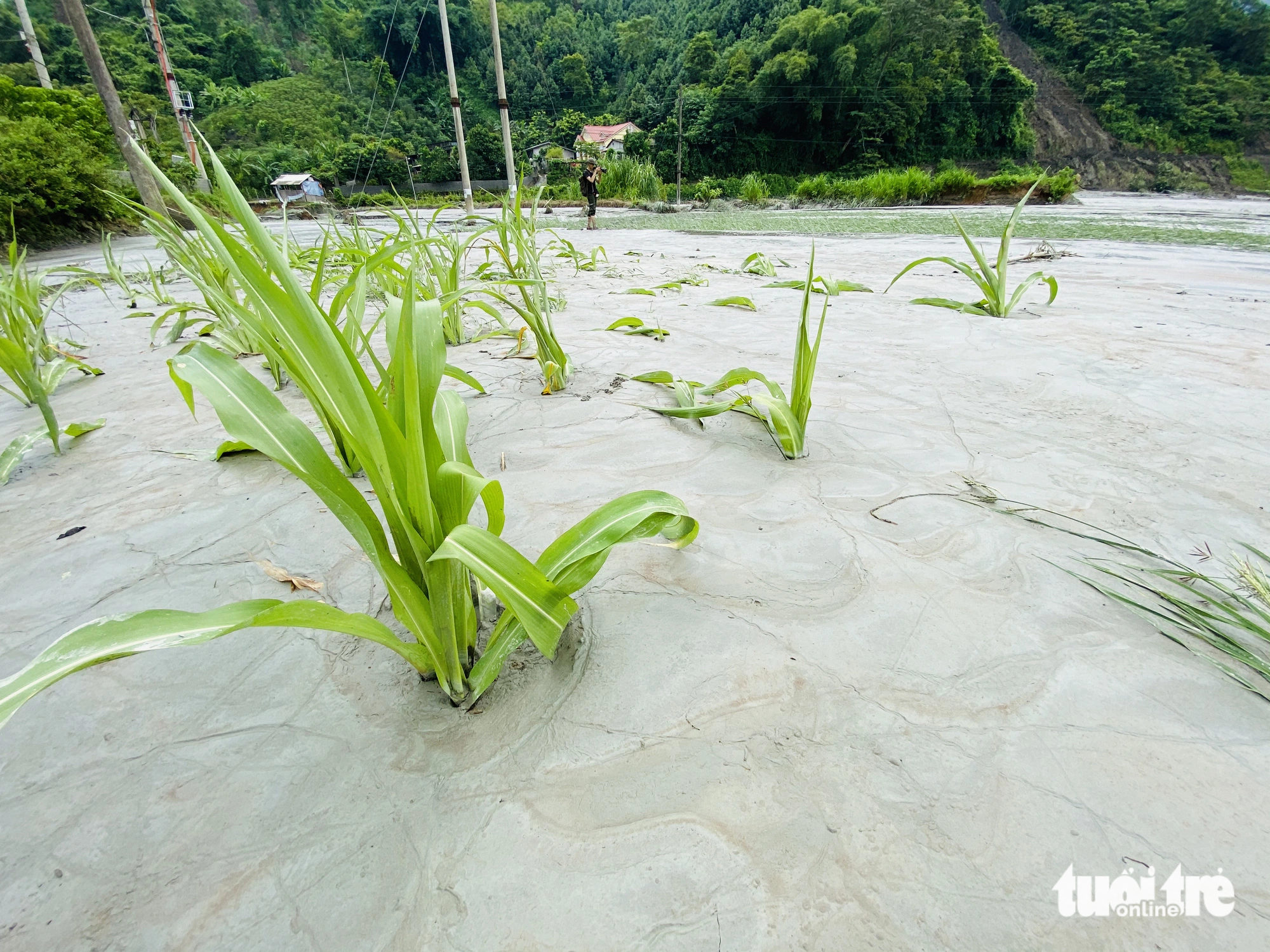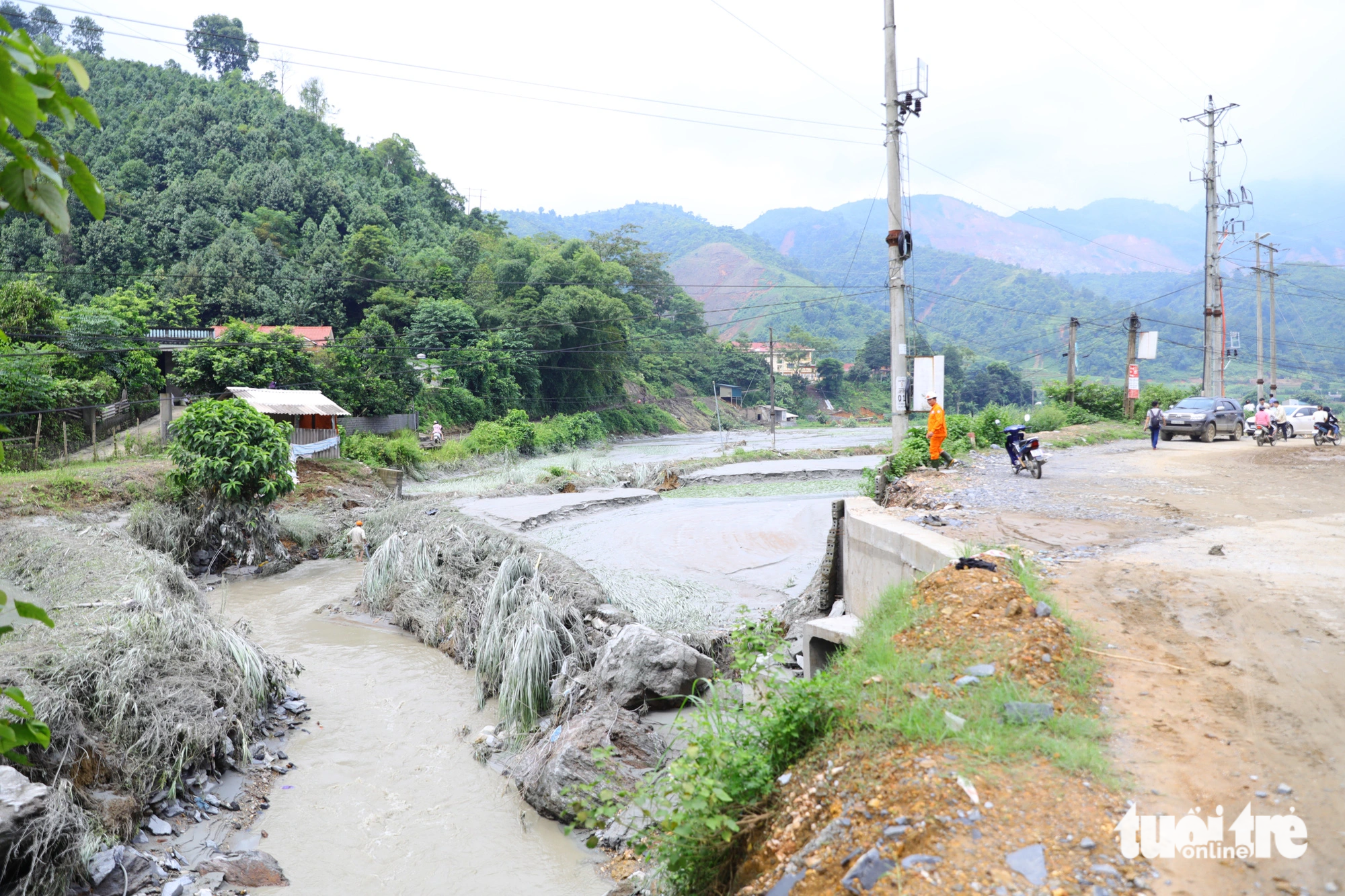The flow of a stream of sludge from a copper ore processing plant in Lao Cai Province, northern Vietnam into the environment has raised concerns over water and soil pollution.
Thousands of cubic meters of water and sludge from copper ore processing barreled through Ta Phoi Commune in Lao Cai City of Lao Cai Province on August 8.
The wastewater inundated 46 houses and five hectares of crops, and rushed toward a local stream within a couple of hours.
Tran Van Hung, chairman of the Ta Phoi People’s Committee, said the flowing was caused by the breakage of a reservoir owned by Ta Phoi Copper Company. The firm has already deployed vehicles and personnel to repair the reservoir.
The Lao Cai People’s Committee blamed torrential rain for the breakage, adding that the exact amount of damage incurred is being evaluated.
Pham Van Son, director of the Vietnam Environmental Incident Response Center, said that what happened was a 'serious environmental incident' and an analysis of the sludge samples needs to be done to determine the level of its toxicity.
|
|
| Crops are buried in ore processing sludge in Ta Phoi Commune, Lao Cai City, Lao Cai Province, northern Vietnam. Photo: Hoang Bach / Tuoi Tre |
The stream flew around 20 kilometers away from the Red River, which courses through nine provinces and cities in the northern region.
Son said that rehabilitating the affected areas of crops, ponds, and lakes presents considerable challenges.
He explained that the sludge from the company contains heavy metals and other chemicals, and once it enters the environment, there would be no way to completely clean them.
These substances would seep into the ground and may contaminate groundwater sources, and part of them may dissipate into the air.
Son added it would be impractical to remove millions of cubic meters of contaminated soil.
|
|
| Ore processing sludge floods a stream in Ta Phoi Commune, Lao Cai City, Lao Cai Province, northern Vietnam. Photo: Danh Khang / Tuoi Tre |
In addition, the consequences arising from the visible sludge-covered areas will pale in comparison to the effects of the waste released into rivers and streams.
“This could potentially have repercussions for humans through the usage of surface water, leading to the contamination of aquatic resources, microorganisms, and water utilized for agricultural purposes,” he said.
According to him, the predominant approach to treating surface water at present is centered around disinfection through the utilization of substances like alum, but this method lacks the capacity to effectively counteract or eliminate chemicals and toxins.
“Therefore, it is necessary to conduct extensive and prolonged observations across multiple regions to comprehensively evaluate the scope and impact, rather than solely focusing on the vicinity of the Ta Phoi copper mining facility,” said Son.
Like us on Facebook or follow us on Twitter to get the latest news about Vietnam!























































